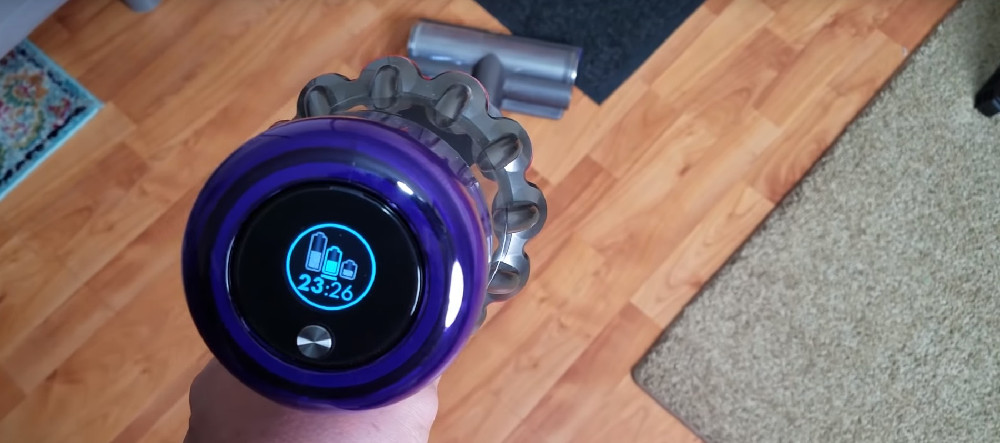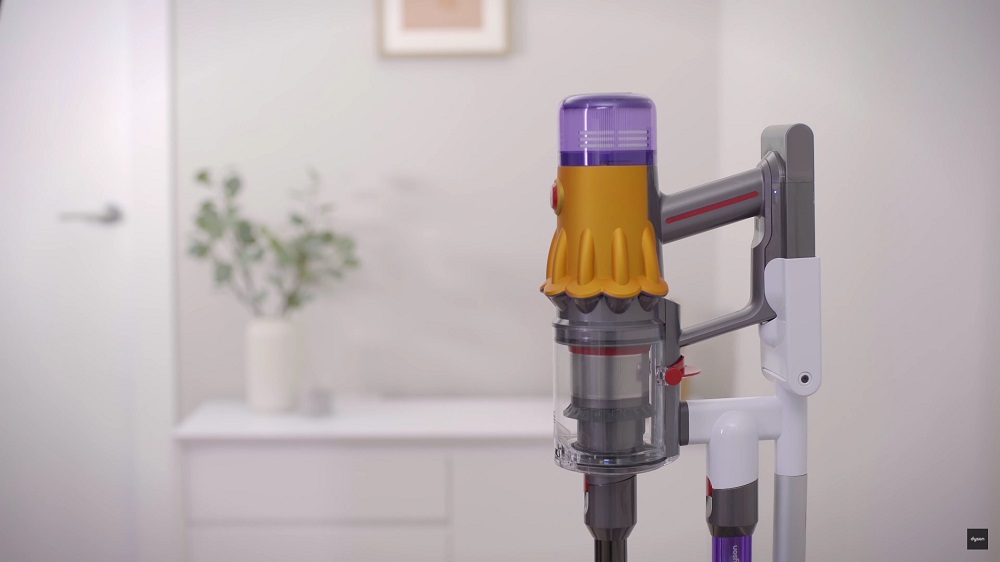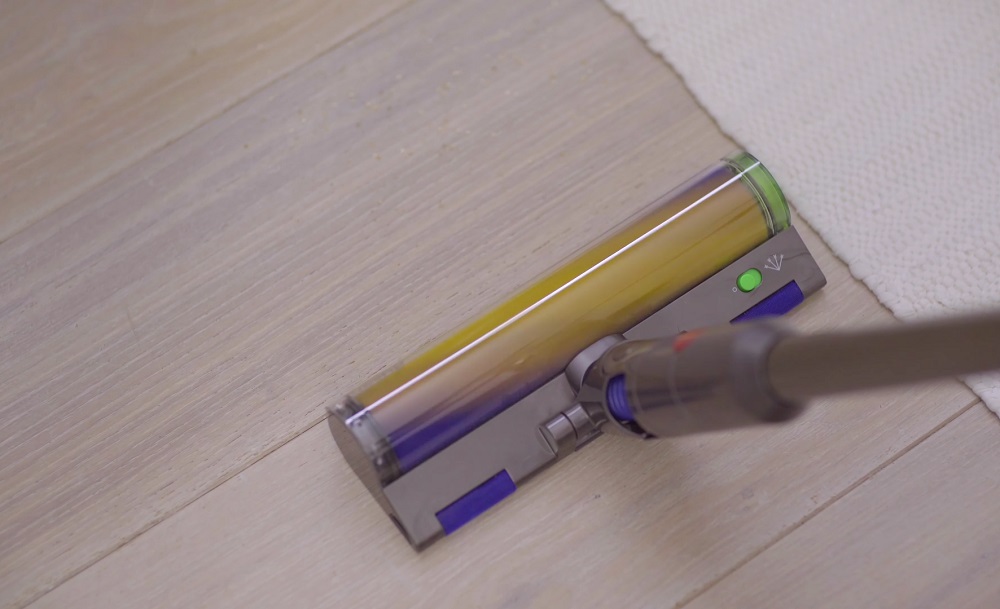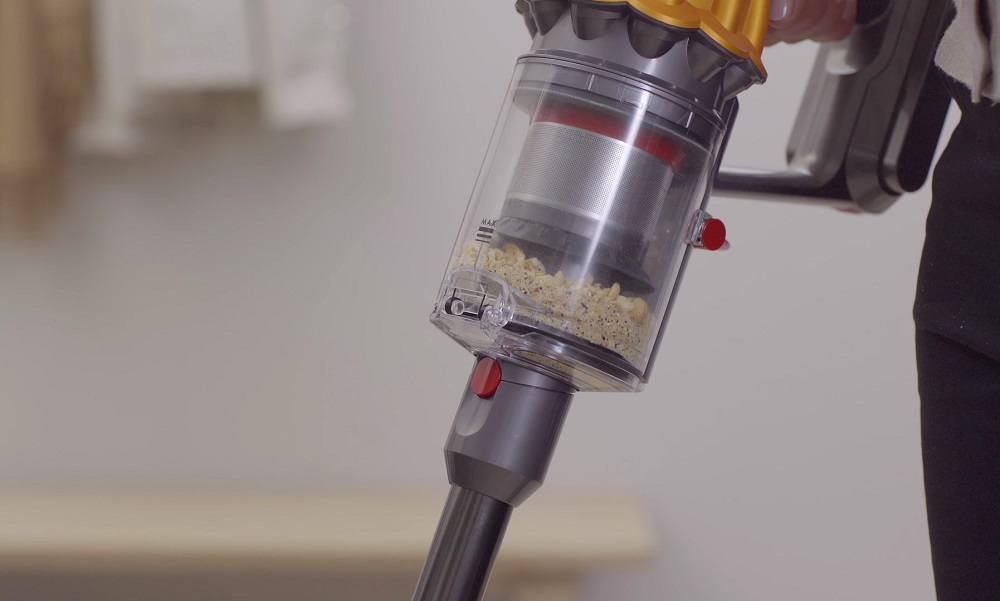When it comes to stick vacuum cleaners, there’s one brand that’s on a whole other level—Dyson. The only problem you’ll have with Dyson is choosing which of their leading stick vacuums to choose.

Today, we’re going to compare the Dyson V11 Torque Drive against the V12 Detect to see which of them is more deserving of your affection.
Dyson V11 Torque Drive
Smart LCD Display
Something you’ll find in Dyson stick vacuum models is a digital display on the handle. In the Dyson V11’s case, the LCD Detect screen informs the user of which speed setting is currently active, filter maintenance reports, and remaining battery life.
The V12 Detect has a similar kind of digital display, but we’ll get to that in a minute.
60-Minute Runtime
Both of the Dyson stick vacuums in this comparison boast beefy battery packs that offer 60 minutes of fade-free power. This means that from start to finish, the vacuum will deliver consistent levels of suction power until the battery is completely drained.
When you need to recharge, just place your stick vacuum in the drop-in dock and let it sit there for about 4 hours to reach max capacity.
High-Torque Floorhead
What you need to know about the Dyson V11 is that it features a truly unique kind of floorhead. Whatever mode you choose, the floorhead will spin at a much faster rate than most cordless stick vacuums to dislodge any debris hidden in between carpet fibers.
It’s a multi-surface floorhead that works on both carpets and bare floors, so you won’t need to swap between attachments.
DLS Sensor
Another thing that makes the V11 Torque Drive an excellent option is the Dynamic Load Sensor (DLS) system. As you vacuum your floors, built-in sensors constantly detect the size of debris that make their way into the inlet. Greater quantities of large-sized debris, like grains of rice, will crank suction power to the max.
Less challenging jobs will bring the speed back down to Eco Mode.
Built-in Battery Pack
One major point of difference between the V11 and V12 is the battery pack. While both are ultra-beefy (remember, 60 minutes), the V11’s battery is built directly into the handle.
You can’t remove it and swap it for a fresh one when it eventually loses power. As for the V12, you can snap on backup battery packs (sold separately) for larger vacuuming jobs.
- Dyson's most intelligent, powerful cordless vacuum. Twice the suction of any cordless...
- Dyson technology helps create a cleaner, healthier home - Our vacuums and purifiers are...
Dyson V12 Detect
Hyperdymium Motor
We can talk about the Dyson V12 Detect all day, but one of the most important things you need to know about this model is that its motor like no other.
It features Dyson’s Hyperdymium Motor, which spins at a rate of up to 125,000 RPM. This means it produces greater amounts of suction for more challenging jobs, like lifting dried pet food from carpeting.

Radial Cyclone with Multi-Tier Filtration
Here’s another feature that both the V12 and V11 share, though there are slight differences. The V12 uses a series of 11 cyclones to fling large debris upward and away from the filter, thereby leaving it unclogged for the duration of a cleaning session.
As for the V11, you get 14 radial cyclones, though the difference between them is minute at best.
In addition, these stick vacs rely on a multi-tier filtration system, including a HEPA filter, to prevent the tiniest speck of dust from escaping and shooting out into the air. If you know HEPA, you know that they work 99.97% of the time at capturing 0.3-micron particles.

Laser Dust Revealer
Built on the floorhead is a lightbulb that shoots out a super-bright green laser. It works similarly to LEDs that you’d typically find on stick and upright vacuum cleaners, but it’s about a million times better in our opinion.
The laser is positioned in such angle as to reveal debris when vacuuming dark bare floors. The laser doesn’t just illuminate piles of dust; it lets you know where it is by casting a shadow. You won’t find such a system in the V11 Torque Drive.

Pienza Sensor
The V12 uses an upgraded version of the DLS. It’s called a Pienza sensor that doesn’t just measure the size of particles passing through the V12’s inlet, but it also counts how much is going in. While this might seem like a fancy-schmancy, highly unnecessary feature, it serves one primary goal.
Auto-Power Adjust
Namely, to dictate how much power the V12 Detect should output. Judging by how many small, medium, and large particles the vacuum sucks in, the motor will automatically adjust its suction power based on how much resistance it’s up against.
It’s like the DLS system, but instead of differentiating between surfaces, it determines how much power you need based on what sort of debris you’re working with.

Related Dyson Articles
• Are Dyson Stick Vacuum Cleaners Worth the Money?
• Best Dyson Upright Vacuums
• Best Dyson Canister Vacuums

If you have any questions or comments, please add them below in the comment section. Similarly, please let us know if you spot any mistakes or omissions. Thanks!
Last Update: 2024-05-04 | Affiliate links/Images from Amazon Product Advertising API

